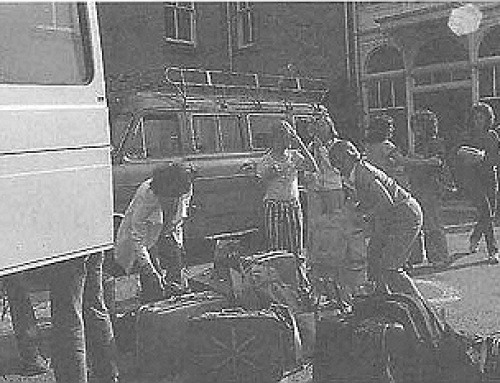Editor’s Note: the following is from a paper based on research conducted by Al McLeod from California State University Fresno, California during his visit in 1977 to the Findhorn Foundation Community, entitled Findhorn, Fact or Fiction? A Sociological Study of a Scottish Intentional Community. As was common at the time, the author used the name “Findhorn”, instead of “the Findhorn Foundation Community” throughout the paper. We apologise to our local neighbours for the upset this appropriation of their name may cause.
***
It has been said that sociology is the scientific study of rules, roles, and relationships (Wilson, 1966). In applying these three concepts to Findhorn, little analysis is possible if by rules is meant the study of written, formal rules. As in any group, however, there are a host of informal rules which set parameters for social action. These rules are so deeply embedded in the social fabric and so much taken for granted that their discovery– let alone their analysis–is difficult. Suffice to say, by way of a general observation of Findhorn, that the informal rules governing face-to-face interaction allowed for and encouraged more trust, affection and candor than prevail in everyday society. This would be expected of a religiously based community.
What are the social roles built into the organization of the community? As with formal rules there seem to be very few experientially or conceptually defined roles. In this regard the community has gone far in achieving the role-free dream of a number of utopias. This has been accomplished in two ways, one a social phenomenon, the other mental. Socially, Findhorn does away with the often rigid roles associated with work and leadership hierarchy. Individuals have considerable freedom deciding where they work, and rotation on the job seems common. Thus a person is not as apt to be known by a work role such as gardener, carpenter, cook, etc.–a utopian idea important to Marx, for example (Lefebvre, 1969). Further, leadership roles are–at least at the lower levels–rotated rather informally. Perhaps in large part due to role rotation at work and in the decision-making hierarchy (even though hierarchy seems like too rigid a word) individuals are typically not seen or known as their roles–a situation approximating that found in small, intimate, face-to-face groups. The typical relationship at Findhorn, then, seems to be person-to-person rather than role-to-role. I believe that this kind of a relationship is a basic factor in explaining the success of Findhorn; that is to understand Findhorn, an analysis of social roles or rules will not provide many insights. Rather, their stability and longevity, as well as the quality of their lives, depends more on the nature of interpersonal relationship and the informal rules governing relationships. A discussion of these relationships is in order.

Guest Authors are contributors who are not COIF members (for various reasons).











Leave A Comment